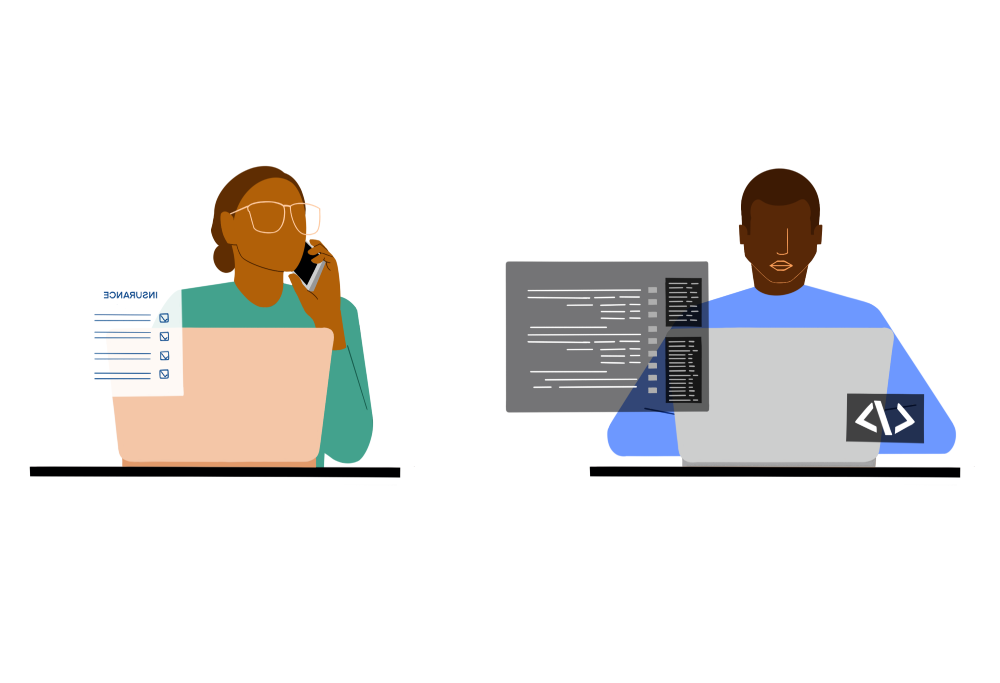Health Plan Operations
May 2, 2024 | 10-minute read
In today's value-based healthcare landscape, collaboration between Payers and Providers is paramount. Payers sit on a treasure trove of data on their members from across their care journeys – claims history, medical codes, utilization patterns – that can offer invaluable insights into population health and care trends. However, the challenge lies in transforming this data into actionable information and pushing it back into the right place in Provider workflows in a meaningful way, at the right time.
This blog dives into the current landscape, explores the challenges, and analyses how various CMS initiatives and rules can be leveraged by Payers to empower Providers with data-driven insights
The Current Landscape: Challenges and Missed Opportunities
- Data Silos and Limited Interoperability: Disparate healthcare systems and a lack of standardized data exchange formats often lead to information being trapped in silos. This hinders the flow of insights between Payers and Providers [1].
- Information Overload and Alert Fatigue: Providers are bombarded with data from various sources, making it difficult to identify and prioritize the most relevant insights for their members.
Examples of Missed Opportunities:
- A Payer identifies a high rate of readmissions for a specific chronic condition within their Provider network. Sharing this data with Providers, along with insights into potential contributing factors, could enable them to implement timely, targeted interventions and improve care coordination.
- Claims data analysis reveals underutilization of preventative care services in a particular member population. Payers could use this information to collaborate with Providers on targeted engagement campaigns to promote preventative care.
The CMS Advantage: Mandates and Initiatives Fostering Change
The Centers for Medicare & Medicaid Services (CMS) has implemented several mandates and initiatives that are paving the way for improved data exchange and collaboration between Payers and Providers:
- Interoperability and Patient Access Final Rule (CMS-9115-F): This rule mandates the implementation of standardized, FHIR-based application programming interfaces (APIs), allowing Providers to access member data electronically from Payers' systems [3]. This lays the groundwork for secure and efficient data exchange.
- Promoting Interoperability Programs: Initiatives like the Medicare Promoting Interoperability Program (Promoting Interoperability) encourage the adoption of certified health IT systems and data exchange capabilities
Pushing Insights Back: Strategies for Payers
Here are some key strategies Payers can leverage to transform data into actionable insights and effectively deliver them to Providers:
- Focus on Actionable Insights: Don't overwhelm Providers with low quality data. Leverage robust data processing capabilities with an effective analytics layer to identify trends, patterns, and opportunities for collaboration and care improvement. Package and deliver insights in a consumable, provider-friendly format by meeting providers where they are – if they’re able to consume FHIR data, give them FHIR data. If they require email notifications, present the information to them in a timely and easily consumable manner.
- Utilize Care Management Programs: Care management programs can be a powerful tool for delivering insights. Proactively identify high-risk members and share targeted data with Providers to support care coordination and population health management efforts. Consider providing secure, web-based dashboards where providers can access real-time data on their patients and populations. This allows for deeper exploration and customization of insights. Share insights on areas like disease prevalence, treatment effectiveness, and potential cost drivers. This allows providers to tailor their approach to better manage entire patient populations.
- Invest in Provider Engagement: Communication is key. Conduct surveys or focus groups to understand how different providers prefer to receive information. Some might prefer visual dashboards, while others might favor concise reports. Partner with Providers to understand their needs and preferred methods for receiving truly actionable insights. Conduct regular training sessions to educate them on the value and use of the data provided.
Examples:
- A Payer develops a risk stratification model that identifies members at high risk for developing chronic conditions. They share the necessary data to supplement their findings so the provider does not have to go looking for the evidence themselves, along with recommended interventions and resources to support early detection and management.
- Claims data analysis reveals a Provider group with a lower-than-average rate of preventative screenings for a specific member population. The Payer collaborates with the Provider group to develop a targeted outreach campaign, leveraging the Payer's member communication channels, in order to offload some of the communication / coordination burden that typically falls on providers.
The Road Ahead: A Collaborative Future
By embracing data-driven insights and fostering collaboration with Providers, Payers can transition from passive data holders to active partners in improving healthcare delivery. As CMS initiatives continue to promote interoperability, the future holds immense potential for seamless data exchange and a more collaborative healthcare ecosystem. Payers who leverage these opportunities will be well-positioned to not only meet regulatory requirements but also create a win-win situation for themselves, Providers, and ultimately, members.
Citations:
- Health Information Exchange (HIE) (https://www.healthit.gov/topic/health-it-and-health-information-exchange-basics/health-information-exchange)
- Alert Fatigue: (https://psnet.ahrq.gov/primer/alert-fatigue)
- CMS Interoperability and Patient Access Final Rule (https://www.cms.gov/newsroom/fact-sheets/interoperability-and-patient-access-fact-sheet)
- Promoting Interoperability Programs: (https://www.cms.gov/medicare/regulations-guidance/promoting-interoperability-programs)




